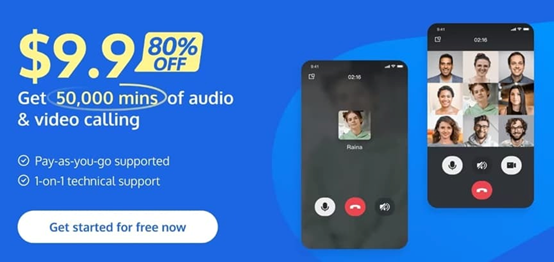With the continuous improvement of consumption power, one car per capita has become a major phenomenon in society. Consumers' choice of vehicles is also shifting from petrol cars to trams, and most people now buy trams as their main means of travel. In the automotive supplies market, voice interaction technology has become a key growth point. As people's requirements for driving safety and convenience continue to increase, in-vehicle supplies need a smarter and more humanized way of interaction. The emergence of the voice chat api provides powerful voice interaction technical support for on-board supplies, enabling it to better meet market demand.

Reliability of On-Board Systems
Voice Interaction: Direct Operation
The most basic function of the on-board system is to realize the function of voice interaction and friendly interaction with the user, and the user can ask questions to the system to get the answers they want. When driving, it can respond immediately by simply calling softly, providing us with a variety of services such as navigation, music playback, and phone calling. There is no need for the user to be distracted, which can improve the safety of driving. In particular, the voice chat api has accurate voice recognition, quick response, and stable performance even at high speeds. Moreover, its voice prompts are clear and the tone is natural so that we can feel the warmth and convenience it brings while enjoying intelligent services. The interactive features of this in-car voice system make driving easier and safer.
Intelligent Navigation System: Efficient Operation
The driver can tell the navigation system the destination with a simple voice command. The voice recognition feature of the voice chat api accurately recognizes the driver's voice and converts it into input commands for the navigation system. In this way, the driver does not need to perform cumbersome operations on complex menus or interfaces, which greatly improves the safety of driving. During navigation, the voice chat api can also provide real-time voice guidance. For example, when it is time to turn or change lanes, the system alerts the driver by voice, so that the driver does not miss important guidance due to distraction. At the same time, the system can also provide the best route selection for the driver based on real-time road condition information, further improving the efficiency and accuracy of navigation.
Intelligent Entertainment System: Fun Operation
When people drive to a certain place, the process may be a bit boring, and single or complex road conditions, can make people lack fun on the way, so you can use the voice chat api, want to enter about listening to the radio, listening to music, listen to novels and other entertainment methods to decompress, you can also chat with other passengers or external contacts through voice. The advantage is that it greatly simplifies the operation process and reduces the risk of the driver being distracted while driving. With voice control, the driver can keep their hands on the steering wheel and their eyes always on the front, which improves driving safety.
Flexible Scalability: Easy to Operate
The voice chat api is also scalable and flexible. Automakers can customize and optimize the voice chat api based on market demand and user feedback to provide car owners with more personalized communication solutions.

Conclusion
For the market, the popularization and promotion of in-vehicle voice systems not only promote the development of automotive intelligence but also meet the growing demand of consumers for efficient and convenient travel methods. Everyone can rely on the system to help when they get around and help improve the competitiveness of their products.